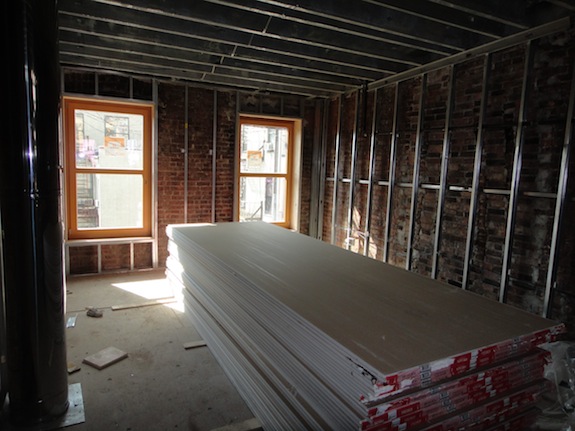Well, the high end of the Harlem townhouse market is certainly doing well – especially in Mount Morris Park. First 30 West 120 sold for $2.5M ($568/sq. ft.), now 105 West 122 just sold in less than 3 months for $2.85M – a whopping $670/sq. ft. Those sales aren’t outliers – The Wall Street Journal is even writing articles about the rise in prices in Harlem.
Admittedly there’s a lot to like about 105 West 122nd Street… It was recently converted to single family and prices for single family townhouses are typically higher than multi-family. Single family homes are luxuries and people pay good money for luxuries. The place is also a generous 19 feet wide with about 4,256 sq. ft. (including exterior walls) – 1,064 sq. ft. per floor, which is big.
The interior renovation appears to have been pretty much perfect. This bathroom is beautiful…
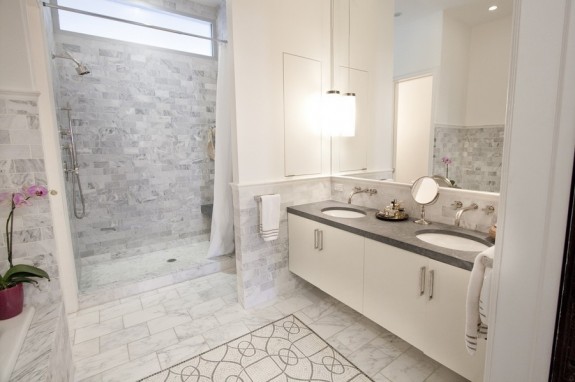 The kitchen looks like it might be European modular ($$) of some sort…
The kitchen looks like it might be European modular ($$) of some sort…
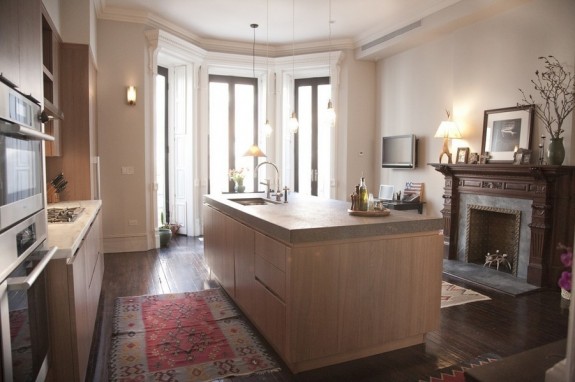 And you can see there’s a wonderful blend of traditional elements and contemporary living – which is what buyer’s want…
And you can see there’s a wonderful blend of traditional elements and contemporary living – which is what buyer’s want…
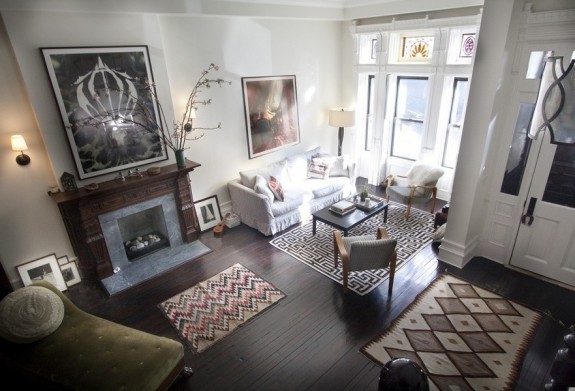
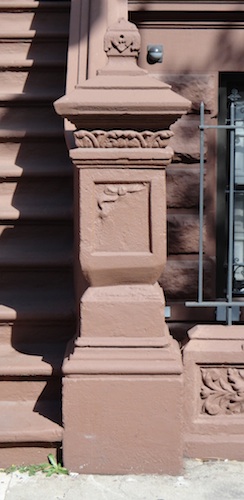 That said, at $2.85M and $670/sq. ft I expect perfection and there are things about the exterior that I personally find a little disappointing… Case and point is the newel post you see in the picture to the right – they didn’t restore the original ornamentation. The sister townhouses on either side have their detail intact – there were examples of what it should have looked like, but the previous owners didn’t take the time to do the work. Not a big deal, but at this particular price point I’d expect it to be done (30 West 120th’s façade work was impeccable). Also the façade is painted – which is something you do when you’re cutting corners to stay on budget (like we are with our place).
That said, at $2.85M and $670/sq. ft I expect perfection and there are things about the exterior that I personally find a little disappointing… Case and point is the newel post you see in the picture to the right – they didn’t restore the original ornamentation. The sister townhouses on either side have their detail intact – there were examples of what it should have looked like, but the previous owners didn’t take the time to do the work. Not a big deal, but at this particular price point I’d expect it to be done (30 West 120th’s façade work was impeccable). Also the façade is painted – which is something you do when you’re cutting corners to stay on budget (like we are with our place).
Then there are the windows – they’re just inexpensive aluminum windows (see picture below). They’re in good condition, but at this price point I expect better quality.
All in all it’s a great place with an excellent renovation (at least inside). It shows that if you spend time to do a good renovation it will come back to you when you go to sell. I get the sense that some people think we’re being a bit fussy about some of the details in our renovation, but a slightly higher budget and attention to detail really do pay off in the long run.
With the high end going up, the question is what will happen to the low end? Restrictive lending is holding down the prices at the low end for now… It’s a great time for all and mostly cash buyers to be buying and renovating…
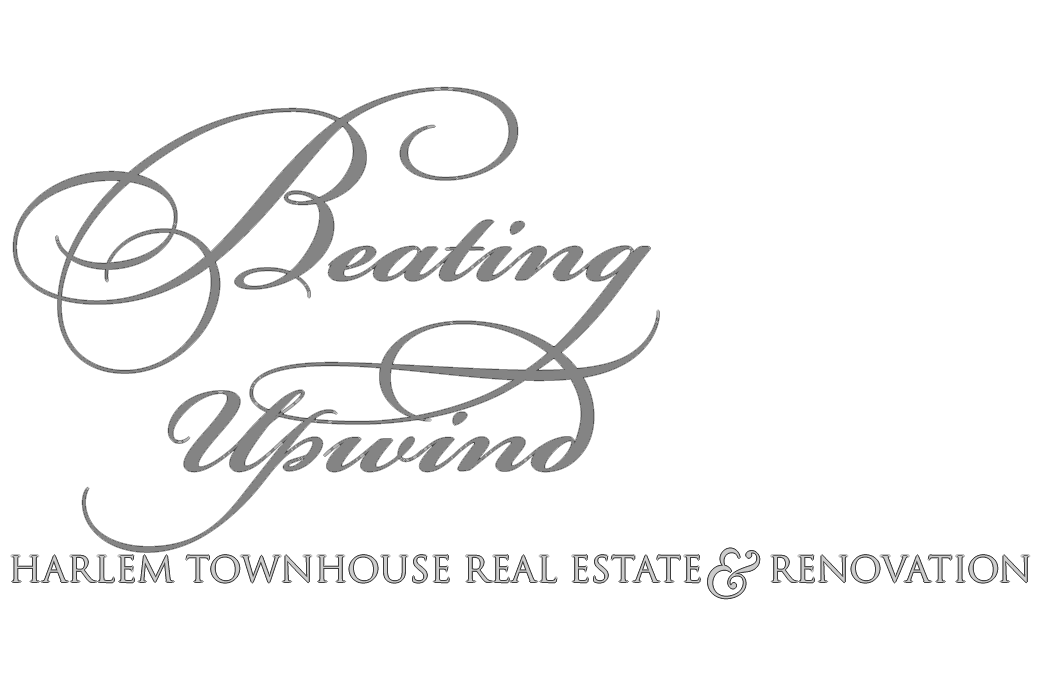
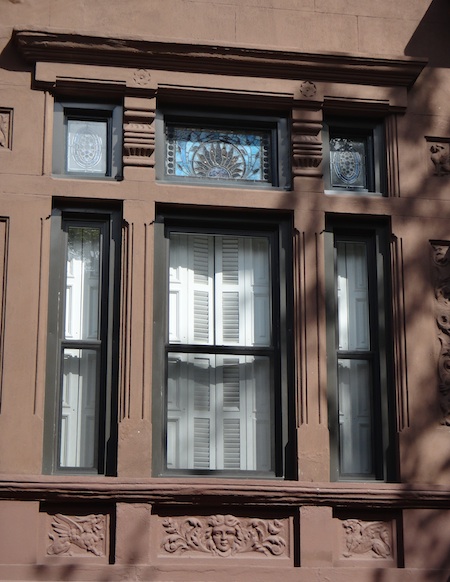
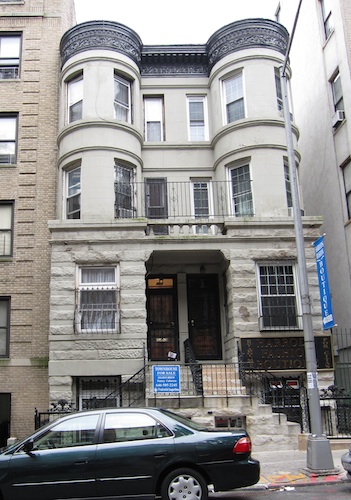 Case and point is 470 West 148th Street – which is just outside the Sugar Hill historic district. It sold recently for $915,000 after being on and off the market for a quite a while. In fact it was on the market for around a million when we were looking in 2009. It was one of our fallback places in case we couldn’t find something we could afford.
Case and point is 470 West 148th Street – which is just outside the Sugar Hill historic district. It sold recently for $915,000 after being on and off the market for a quite a while. In fact it was on the market for around a million when we were looking in 2009. It was one of our fallback places in case we couldn’t find something we could afford.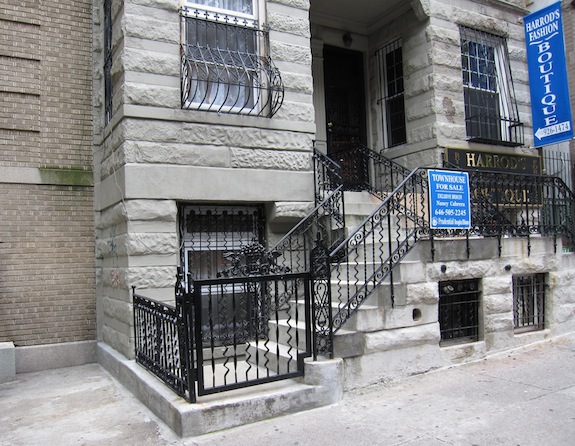
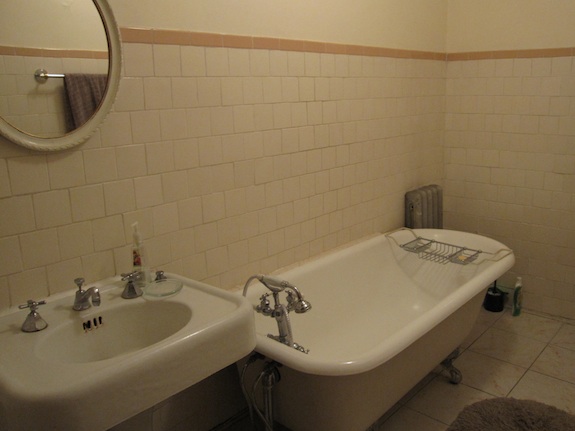
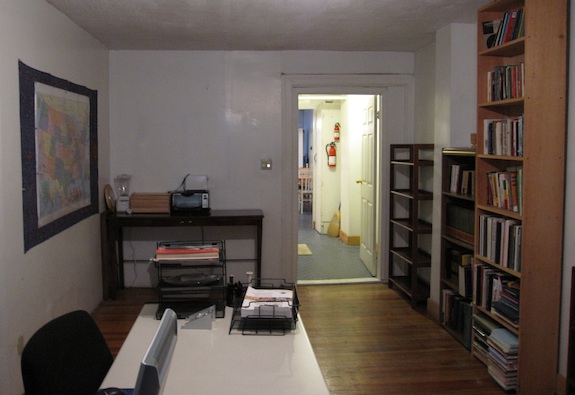
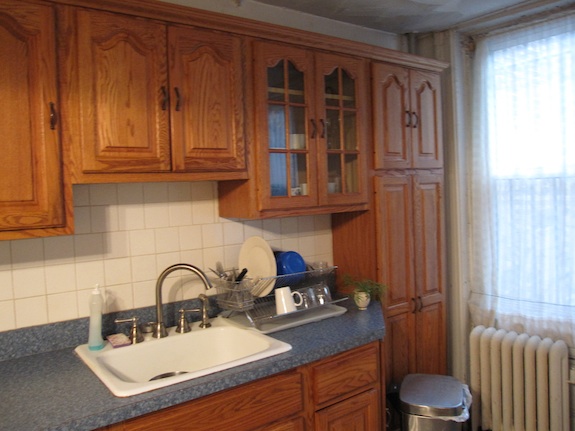
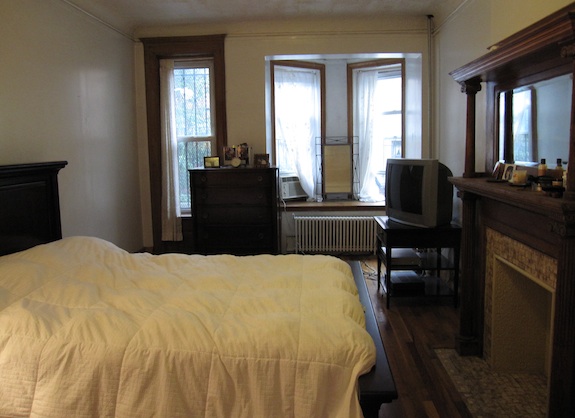
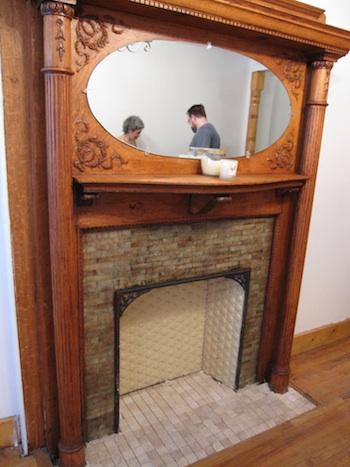 There are some nice original details left – like the fireplaces. They do add some nice character to the house.
There are some nice original details left – like the fireplaces. They do add some nice character to the house.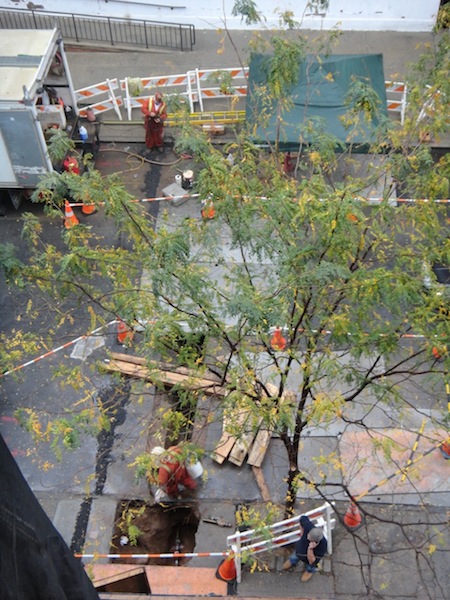 Mind you, getting gas and electric into the building doesn’t mean we can use the gas and electric – they still have to set up the meters.
Mind you, getting gas and electric into the building doesn’t mean we can use the gas and electric – they still have to set up the meters. 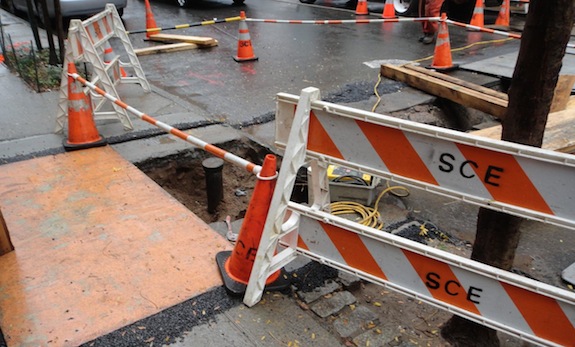 But the good news is that the big delay is over and hopefully it will be downhill from here on with ConEd – though somehow I think there will be some problem that will crop up – in general, things just don’t go all that smoothly with ConEd.
But the good news is that the big delay is over and hopefully it will be downhill from here on with ConEd – though somehow I think there will be some problem that will crop up – in general, things just don’t go all that smoothly with ConEd.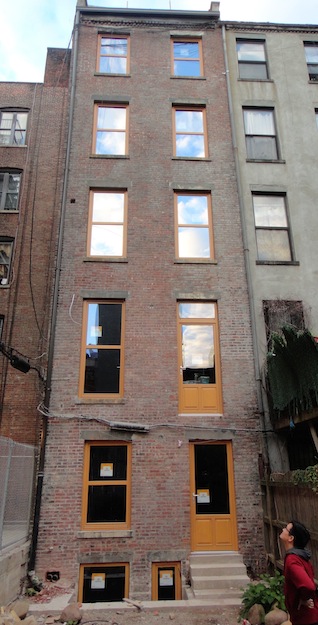 Starting from the bottom, the rental unit has what Gaulhofer calls G28 glazing – which is their standard glazing. 80% of visible light is transmitted through the glass, but only 23% of UV gets through, and 62% of “solar heat”. (The more “solar heat” you block the lower your A/C bills in the summer, but the less help you get with heating in the winter). We use that glazing on most of the front of the building as well.
Starting from the bottom, the rental unit has what Gaulhofer calls G28 glazing – which is their standard glazing. 80% of visible light is transmitted through the glass, but only 23% of UV gets through, and 62% of “solar heat”. (The more “solar heat” you block the lower your A/C bills in the summer, but the less help you get with heating in the winter). We use that glazing on most of the front of the building as well.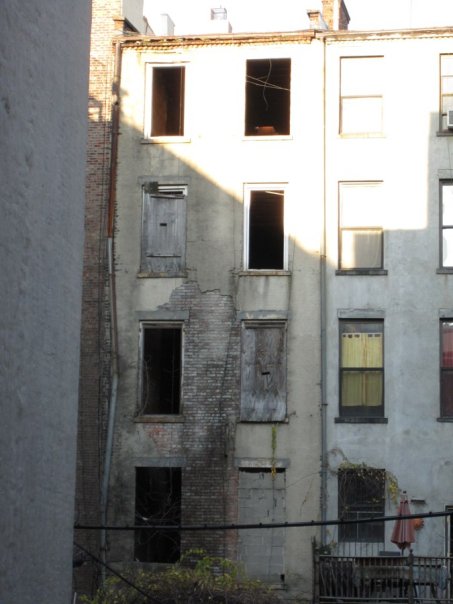
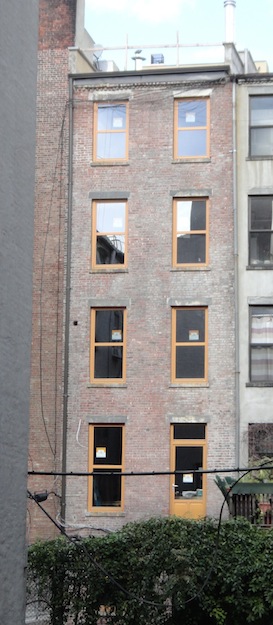
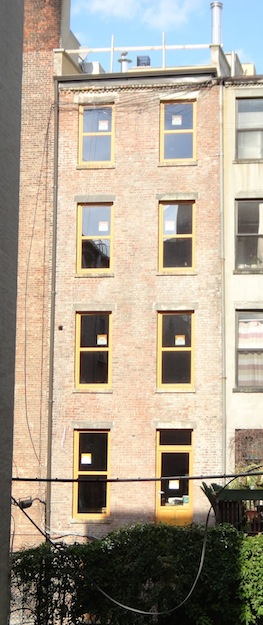
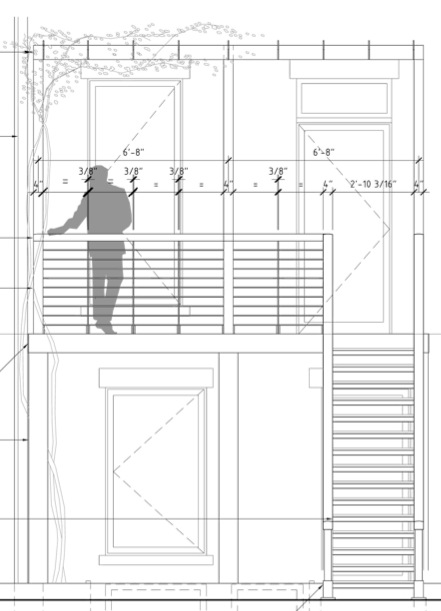 That’s just 4 of the 5 stories (6 if you count the cellar, 7 if you also count the windows in the bulkhead at the roof deck). Here’s the entire wall from a different perspective – you can see where the deck will go…
That’s just 4 of the 5 stories (6 if you count the cellar, 7 if you also count the windows in the bulkhead at the roof deck). Here’s the entire wall from a different perspective – you can see where the deck will go…